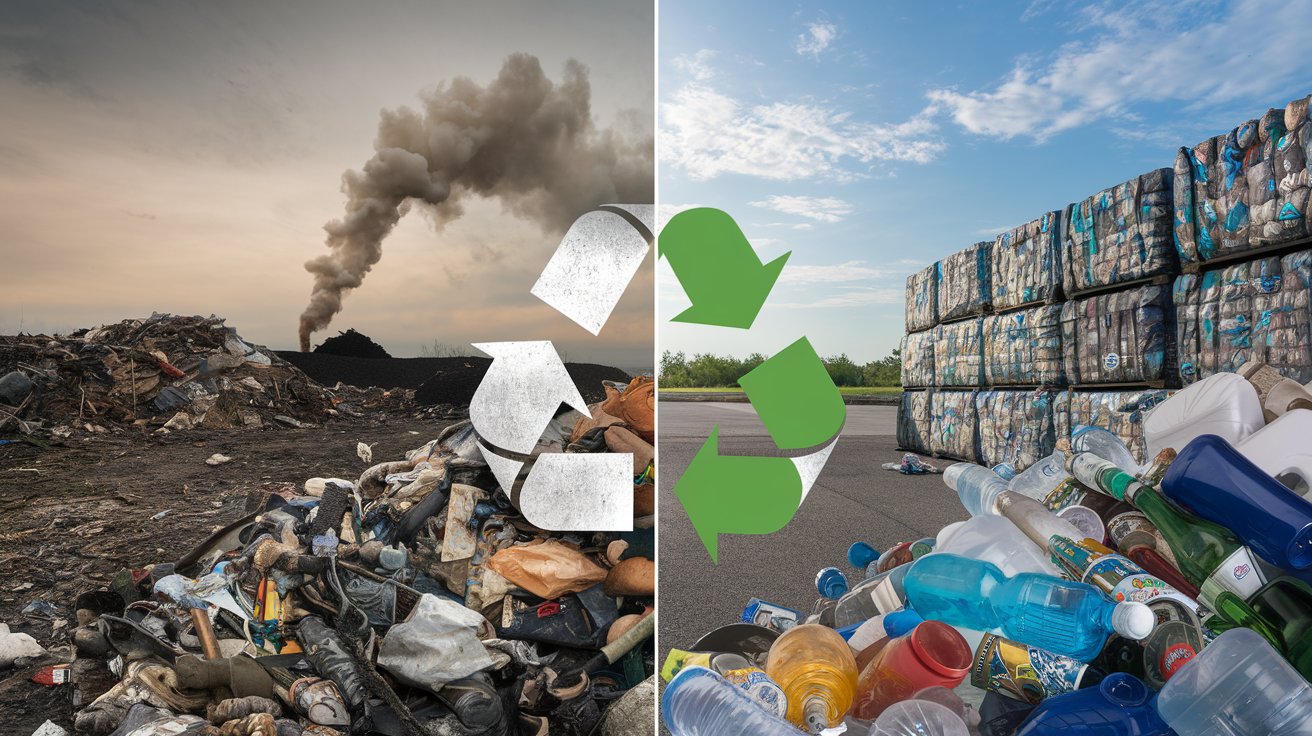In an era where environmental awareness is at an all-time high, understanding the journey of waste—from the moment it’s discarded to its final destination—sheds light on the broader impact of our consumption habits. Every piece of trash we produce has a life beyond the bin, affecting ecosystems, economies, and public health worldwide. This blog will walk you through the lifecycle of trash, the environmental and social toll it takes, and how services like EpiCircle are working to transform waste from a problem into a valuable resource.
The Lifecycle Begins: Disposal and Collection
The journey of waste starts as soon as it leaves our hands. For most households, this means placing trash in bins for pickup by local waste management services. Yet not all waste is treated equally. Waste can be divided into categories such as:
- Organic Waste: Compostable items like food scraps and yard trimmings.
- Recyclables: Paper, glass, metals, and certain plastics that can be processed and reused.
- Hazardous Waste: Electronics, batteries, and chemicals, which require careful handling due to potential toxicity.
- Landfill Waste: Non-recyclable and non-compostable waste, often single-use plastics, destined for the landfill.
Each type of waste has a different journey and impact. Efficient waste segregation—which EpiCircle promotes through its collection service—ensures that recyclable and compostable materials are redirected from landfills, where they would contribute to greenhouse gas emissions and leach harmful chemicals.
Sorting and Processing: What Actually Gets Recycled?

After collection, waste is transported to sorting facilities. Here, recyclable materials like metal, paper, and certain plastics are separated from landfill-bound waste. However, not all recyclables actually get recycled. Contamination (like food residue on recyclables) and lack of market demand can prevent recyclables from being processed, leading them to landfills instead.
For example:
- Plastics: Only a small percentage of plastics, particularly types 1 and 2, are widely recyclable, while others often end up in landfills.
- Paper and Cardboard: Paper products can generally be recycled, but contamination, like grease on pizza boxes, can render them unusable.
EpiCircle’s role in educating communities about waste segregation and providing resources for proper disposal is critical. By minimizing contamination, EpiCircle ensures that more materials can enter recycling streams rather than landfills.
The Environmental Toll of Landfills
When waste ends up in a landfill, its lifecycle doesn’t end; rather, it begins a slow process of decomposition that can last for hundreds of years. Landfills emit methane gas, a greenhouse gas more potent than carbon dioxide, contributing significantly to climate change. Additionally, leachate, the toxic liquid that forms as waste breaks down, can seep into soil and water, contaminating ecosystems and harming wildlife.
Impact highlights:
- Methane Emissions: Landfills are one of the largest human-made sources of methane, accelerating global warming.
- Soil and Water Contamination: Toxins from electronics and plastics can leach into groundwater, affecting both human health and wildlife.
EpiCircle’s efforts to divert waste from landfills through recycling and reuse initiatives play a crucial role in reducing these harmful effects, aligning communities with eco-friendly disposal options.
The Resource Drain: Raw Material Extraction vs. Recycling
When items are disposed of rather than recycled, new products must be created from raw materials. This process requires mining, logging, and drilling, which deplete natural resources, destroy habitats, and consume vast amounts of energy. Recycling, however, reduces the need for raw material extraction and saves energy:
- Aluminum: Recycling aluminum saves 95% of the energy required to produce it from bauxite ore.
- Paper: Recycling a ton of paper saves around 17 trees and conserves approximately 7,000 gallons of water.
EpiCircle’s recycling programs help communities contribute to resource conservation by encouraging recycling over disposal, which in turn reduces the demand for new raw materials and preserves natural resources.
Community and Economic Impact: Waste as a Resource
Repurposing waste through recycling and reuse not only benefits the environment but also drives economic growth and community development. By treating waste as a resource, communities can create jobs and stimulate local economies. The recycling industry supports jobs in collection, sorting, processing, and material reuse.
EpiCircle’s model empowers communities to turn waste into value through initiatives like the Zero-Waste Society and Green Coins rewards program. Residents are encouraged to recycle more and earn rewards, creating a culture of sustainability while boosting local economies.
Your Role in the Lifecycle of Waste: Making Sustainable Choices

Understanding the lifecycle of waste reminds us that our disposal habits have far-reaching consequences. By making informed choices—like reducing single-use plastics, recycling responsibly, and using services like EpiCircle to ensure proper disposal—you’re playing an active role in a sustainable future. Together, we can work toward a circular economy where waste is minimized, resources are conserved, and communities thrive.
Take Action with EpiCircle!
Ready to start making a difference in your community? Download the EpiCircle app to schedule your waste pickups, earn rewards, and join the movement toward a zero-waste future. Or, if you’re a business looking to enhance your sustainability efforts, reach out to us to see how we can help you achieve your environmental goals. Together, let’s make every piece of waste count.



Leave A Comment